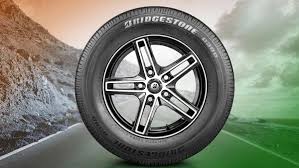Bridgestone Tyres – Size Guide
Bridgestone Tyres Sutton Coldfield‘s are great tyres and a wide range of products and services with innovative technologies. But while using these tyres, you need to know how to take care of them. In this article, we will discuss how to read and understand tyre size and all about its care.
How To Read Tyre Size?
Installing the correct tires on your vehicle is important to the overall performance and safety of your vehicle. Tyre selection should reflect the conditions in which you drive and your preferences for vehicle response and handling. You should understand what tyre size is right for your vehicle so that you can make the right decision when it’s time to buy tyres.
Fortunately, determining the correct tyre size for your vehicle is fairly simple. All the information you need is immediately available either in your vehicle’s owner’s manual or somewhere in the vehicle itself.
While actual physical dimensions such as width and diameter are factors in finding the right tyre size, there are other details to consider. Things like load rating and speed rating are also integral to finding the right tyres.
Where to find tyre size?
No matter what vehicle you drive, it should be easy to find the manufacturer’s recommended tyre size. The best place to start looking is the user manual.
Don’t worry if you can’t find the manual; you can also find a tyre fitting guide at these places:
- Door frame on the driver’s side
- Inside the compartment in the glove box
- Inside the fuel tank cap
Assuming your current tyres are originally fitted, you can find tyre size information on the sidewall of your tyres. Regardless of where you find your tyre size, you’ll need to decipher the sequence of numbers and letters.
Reading tyre sizes
- THE LETTERS “P” AND “LT“
On most vehicles, you will see the letter “P” before the beginning of the number series:
P225/70R16 91S. “P” stands for “P-metric”, which is the Tyre and Rim Association designation for a type of “passenger car” tyre. This means that the tyre has evolved and designed primarily for use on passenger vehicles, which can include cars, minivans, SUVs and other light trucks.
If you see “LT” instead of “P”, it’s because you need “light truck” tyres – “LT” is short for “LT-metric”, which is the Tyre and Rim Association’s designation for a type of “light truck “. tyre. Light truck tyres are specifically designed for use on vehicles capable of carrying heavy loads or towing trailers.
Similarly, the “T” stands for “temporary” and is for your spare tyre. If you see “ST” it means “special trailer”.
- WIDTH
The first number that appears in the tyre size information is the width in millimetres of the correct tyres for your vehicle: 225/70/R16 91S.
Tyre width always refers to the dimensions from one sidewall to the other. The “P225” tyre is therefore intended for passenger vehicles and has a nominal width of 225 millimetres.
- ASPECT RATIO
After the slash is another number you see for the tyre’s aspect ratio, which tells you how tall your tyre’s profile is: 225/70/R16 91S. Aspect ratios appear as percentages. Tyre manufacturers calculate the aspect ratio by dividing the tyre’s height from the rim by its width.
If a tyre has an aspect ratio of 70, it means that the height of the tyre is 70% of its width.
Lower aspect ratio tyres such as the 45 series generally offer vehicle handling advantages over higher aspect ratio tyres such as the 55 series.
- CONSTRUCTION
The aspect ratio follows a letter that indicates the type of internal structure that keeps your tyre stable: 225/70/R16 91S.
You can see two types of construction on the tyre sidewall:
- R – radial
- D – Diagonal or Bias Ply
Radial construction means that the inner cords of the tyre extend in a radial direction, from one bead to the other, essentially perpendicular to the axis of rotation.
- RIM DIAMETER
The next number is the diameter code in inches of the rim that the tyre can mount on. For example, a 225/70/R16 91S tyre would fit a 16-inch rim.
- LOAD INDEX
The next number in the sequence is your tyre’s load index, which tells us how much weight in kilograms the tyre can support when fully inflated: 225/70/R16 91S
We call it the “load index” because the number doesn’t tell us the exact number of kilograms the tyre can carry, at least not by itself. However, the number corresponds to the specific load capacity indicated in the index.
Starting with 60 and ending with 179, the numbers in the capacity index represent capacities from 250 to 7750 kilograms.
Final Words
Finding the perfect tyre for your car, truck or SUV is as easy as choosing your tyre size. You can find your size in several places: on the inside frame of the driver’s side door, inside the glove box door, in the driver’s manual, or on the sidewall of the tyre. If you’re not sure how to read tyre sizes, go through the steps mentioned above in this article. You can also check the brand Bridgestone Tyres Sutton Coldfield’s website for more information.




